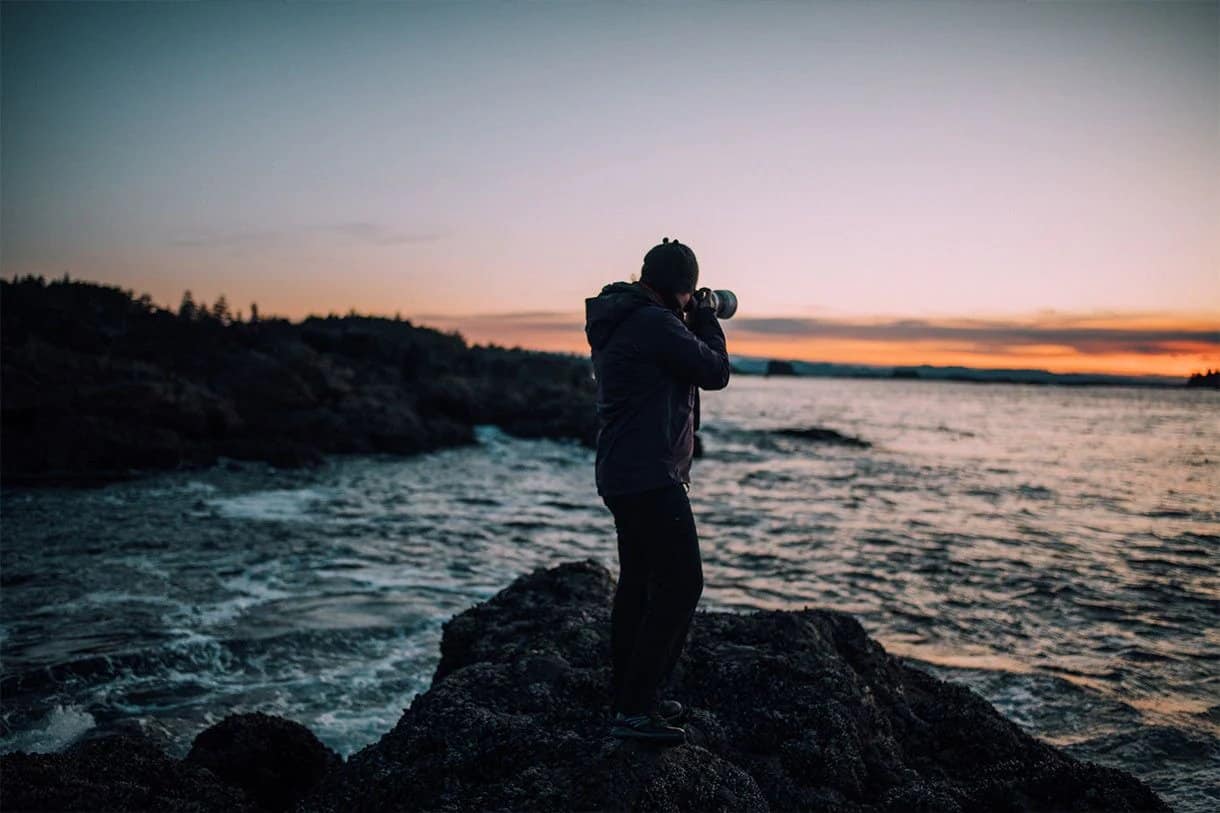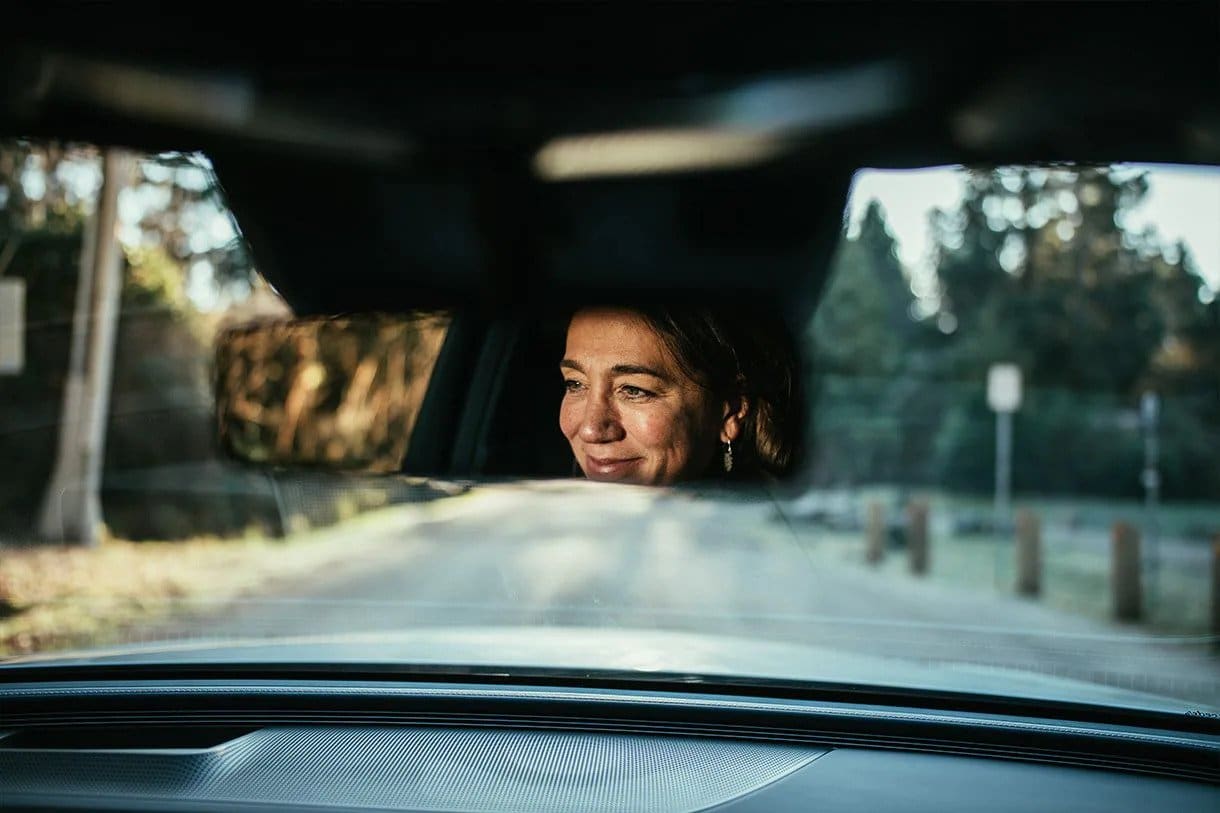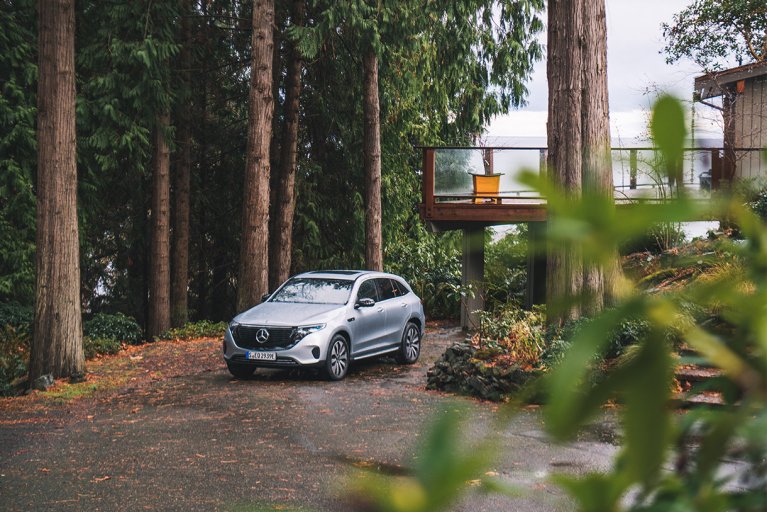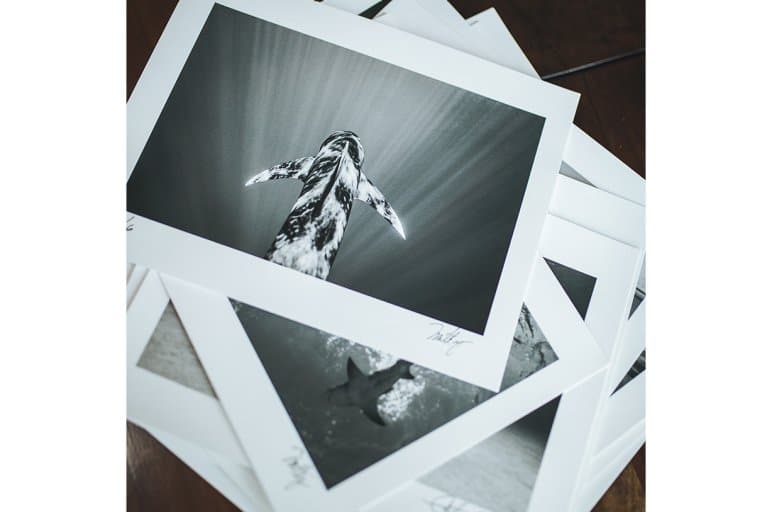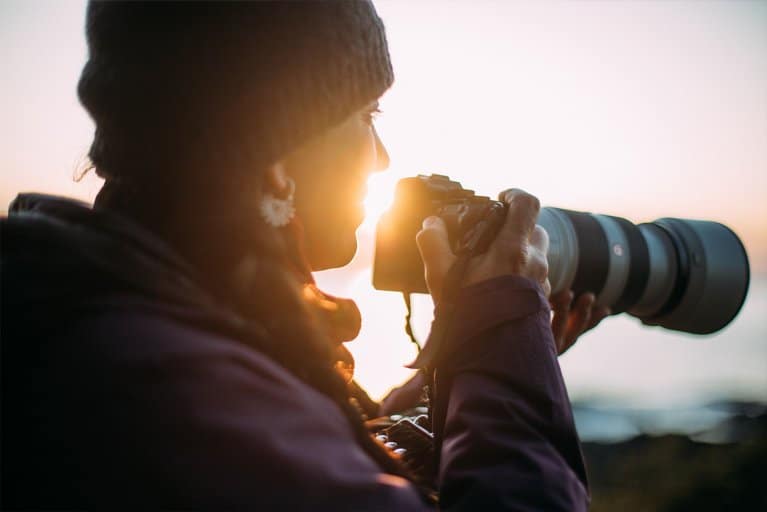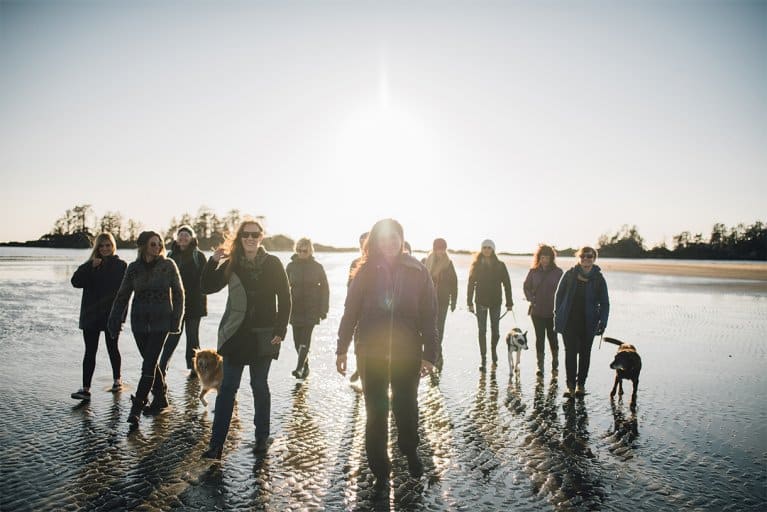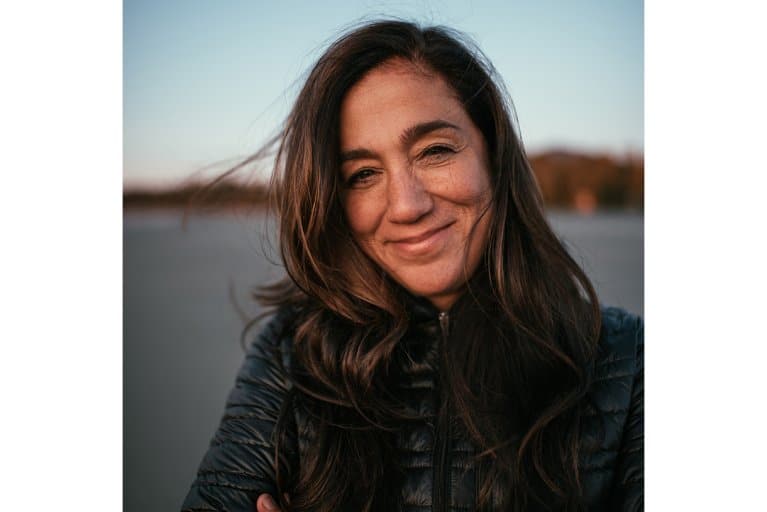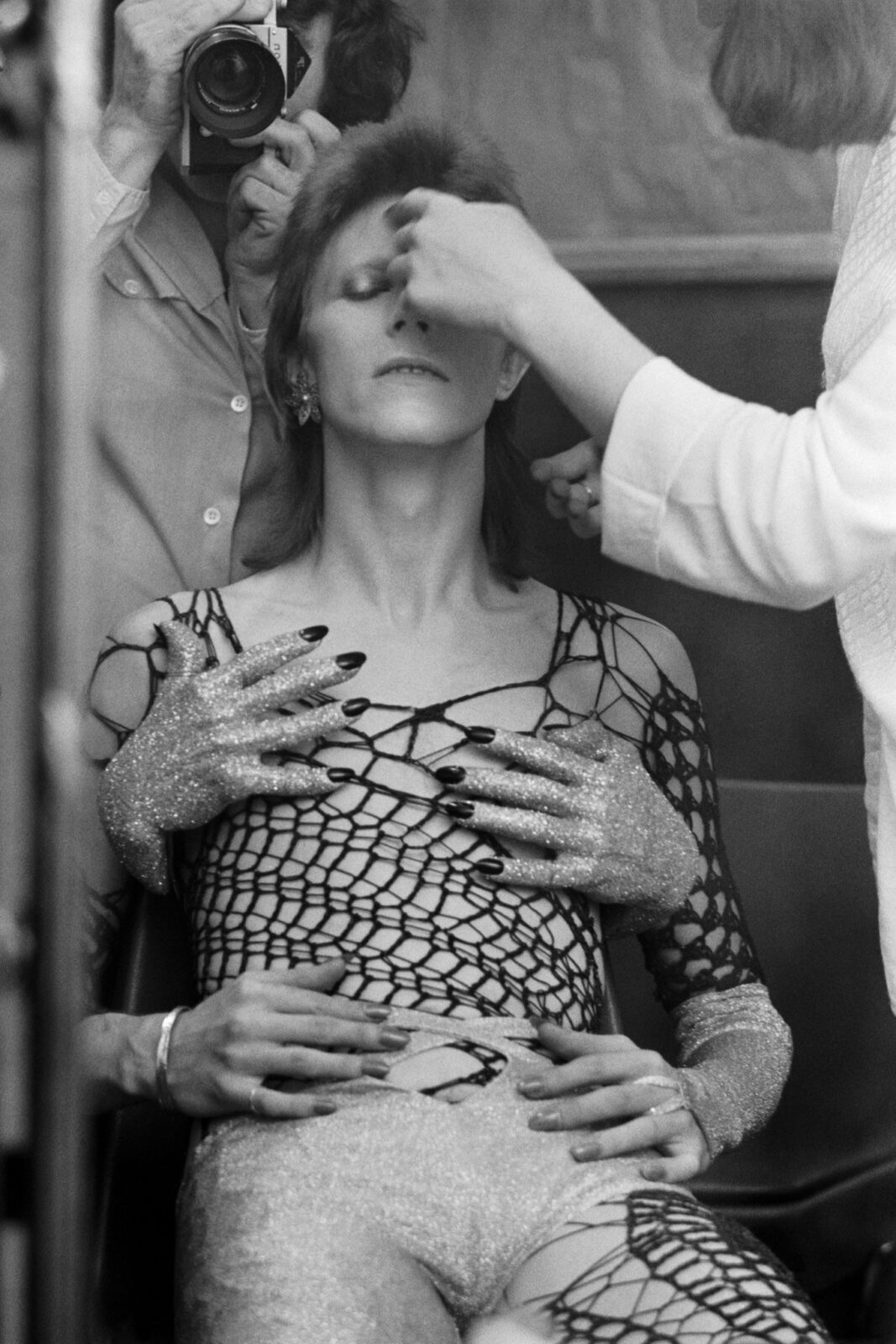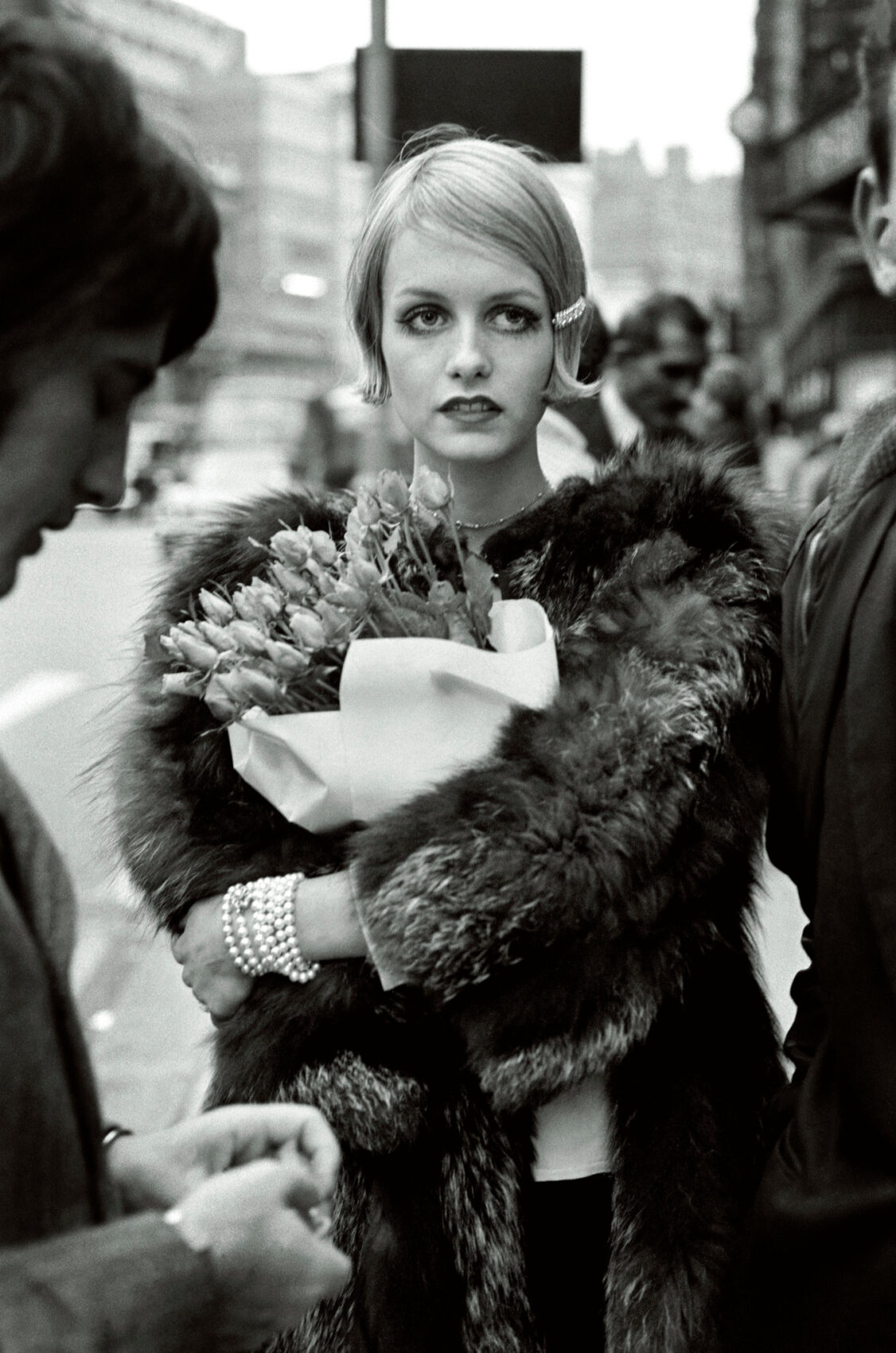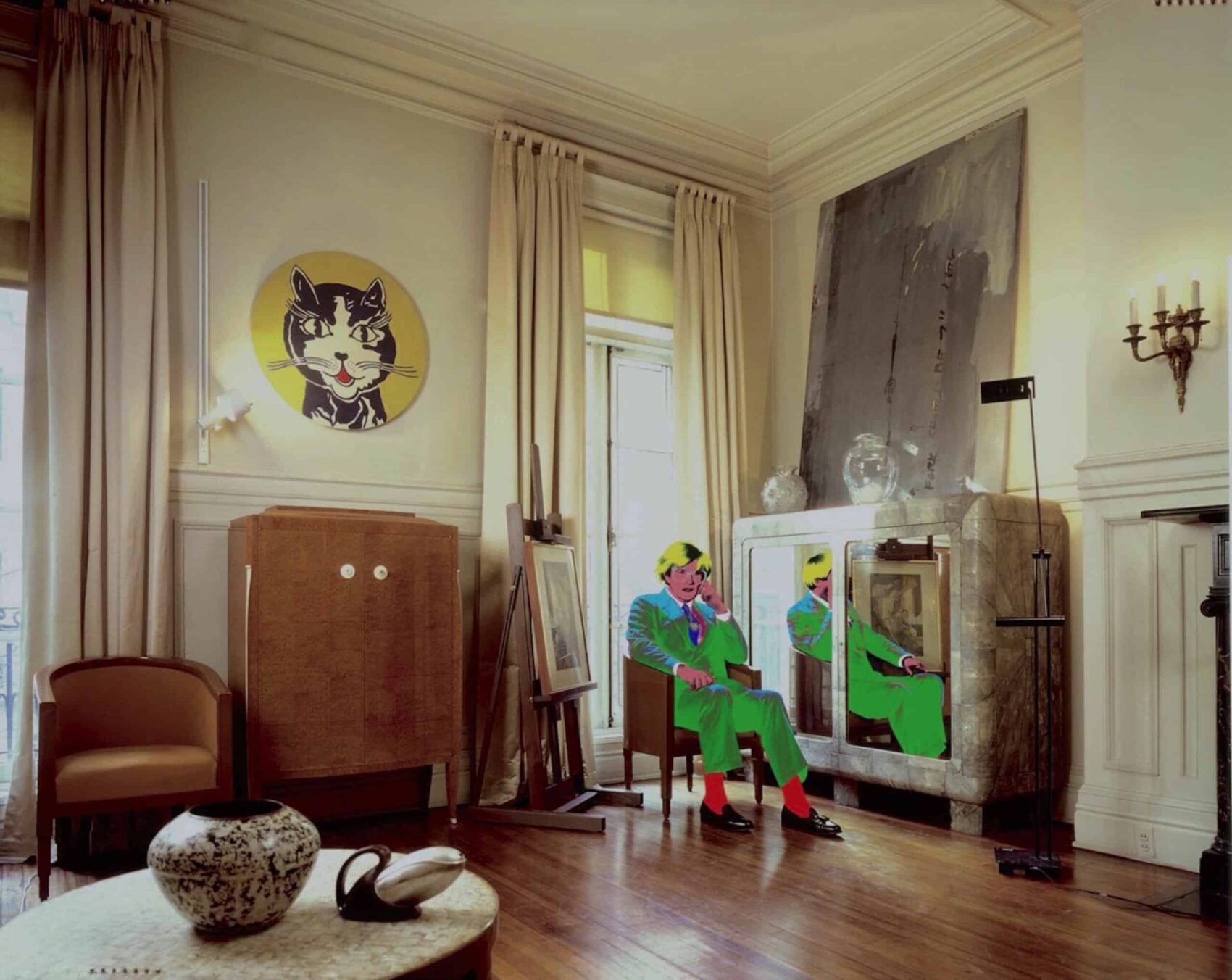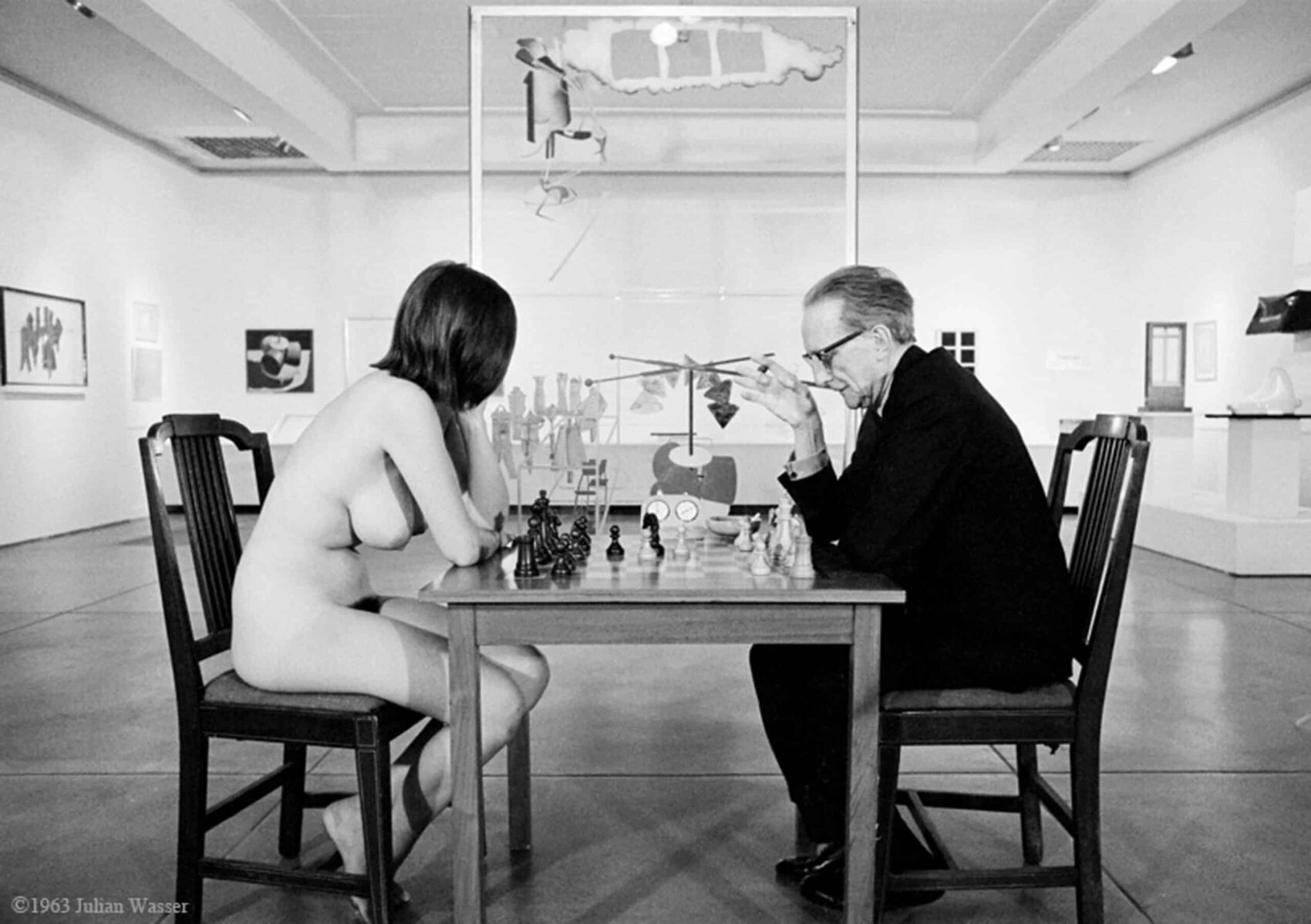Fragile beauty
How conservation photographer Cristina Mittermeier uses her work to protect the oceans.
The pictures by photographer Cristina Mittermeier show how fragile our planet is. They show the beauty and, at the same time, the transience of nature. Despite all the challenges, Cristina is certain: it is not too late – we can save our planet if we act together now. We visited the marine biologist on board our first all-electric vehicle, the EQC. In her chosen home on Vancouver Island, we talked to her about how she uses her passion for strong stories to make the earth a better place – and how she was the first “conservation photographer” in the world to succeed in a male-dominated profession.
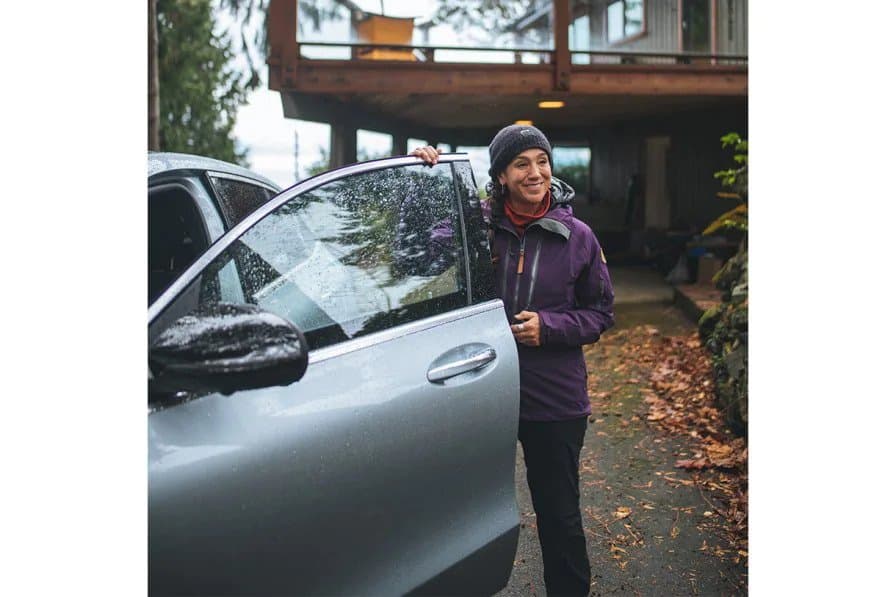
Listening to Cristina Mittermeier talk about nature, there is no need to ask why she has made Vancouver Island the centre of her life. The Pacific island is a natural wonder, impressing with picturesque fjords, rainforests and fascinating storms. One could almost use this natural phenomenon as a metaphor to describe Cristina’s captivating personality: her non-conformity, her courage and her enduring passion for what has helped her to succeed in an industry that is still predominantly male. How does that work? “Don’t listen to the voices in your head telling you that your dream is not for girls. That you are not strong enough, brave enough or smart enough. Instead, imagine walking those voices to the edge of a cliff and throwing them over. It takes a lot of courage to take the more difficult path; do it anyway; defy the norm and be an example to others.” Cristina is using the fact of being a woman to her advantage. She has managed to turn perceived weaknesses into her secret weapon.
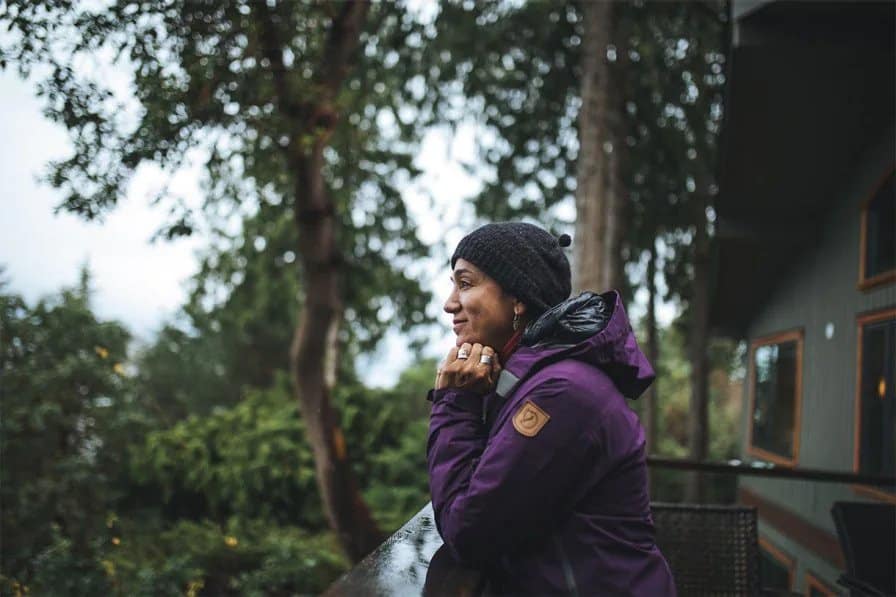
We visit Cristina in her cosy house right on the Bay of Georgia, where she lives with her husband Paul Nicklen and their two dogs. Spread out on the living room table are some pictures, which the photographer is currently signing. Paul Nicklen is also a nature photographer and her “life and adventure partner,” Mittermeier tells. In addition to their shared love of photography, the two are united by their desire to protect the environment. Above all: the oceans. “The sea is full of life, full of wonder, so beautiful and wild. But its beauty is fragile. If we don’t protect it, it will vanish.”
This is one of the reasons why Mittermeier sees her work as political. Her photography is her tool; the social networks are her reach enhancer. Magazines such as National Geographic and TIME print her pictures and on Instagram 1.3 million people follow the work of the 53-year-old. During a peaceful trip in the virtually noiseless and locally emission-free EQC through the pristine nature of Vancouver Island, Cristina tells us more about the philosophy of her daily work, which she describes much more as a calling: “Each of my pictures tells a story – the story of the problems that threaten our planet and our oceans.” This is why she describes herself not as a nature photographer but as an environmental photographer – a “conservation photographer” by all means. She has significantly coined the term. Conservation stands for preserving. This is exactly what Mittermeier wants to do: help preserve the planet – and motivate others to do the same. How did she manage to live her dream? “Unknowingly, I made all my important life decisions based on the Japanese philosophy Ikigai (‘finding the meaning of life’). Ikigai calls for us to pursue the things we love, which are the things we have a talent for, which are the things we can earn a living from – and which are the things that make our world a better place.”
Cristina Mittermeier prefers to take her photos where it is particularly cold and wet: under water. However, only about ten years ago Mittermeier came to underwater photography. “I am the best example of how it is never too late to pursue your dreams,” she laughs. Before that, Cristina photographed rather casually – until a special turning point many years ago. At that time, she accompanied the father of her children, a biological anthropologist, to the tropical regions of the world. While he set off on expeditions, she stayed behind in the surrounding villages. She began to portray the inhabitants in the villages – mostly women and children of indigenous tribes. Not in the service of science, but for emotional reasons. Her aim: to capture the perspective of disenfranchised and mostly invisible women. When the photos were printed, she noticed that they make the viewers think. “As a biologist, I was committed to environmental protection already. But I noticed that people react very differently to my photos than to my studies.”
Since then, she has had a dream – and through her work, she is calling for the protection of our unique planet. “I love that my job is my entire life. I get up every morning knowing that I’m contributing to a better world with what I love most – using my stories and images to help protect nature.”
In Memoriam: Terry O’Neill
admin
NOVEMBER 18, 2019 | TERRY O’NEILL
New York Times: By Neil Genzlinger
On an early assignment he shot a new group called the Beatles. He went on to photograph, among many others, Faye Dunaway — whom he later married.
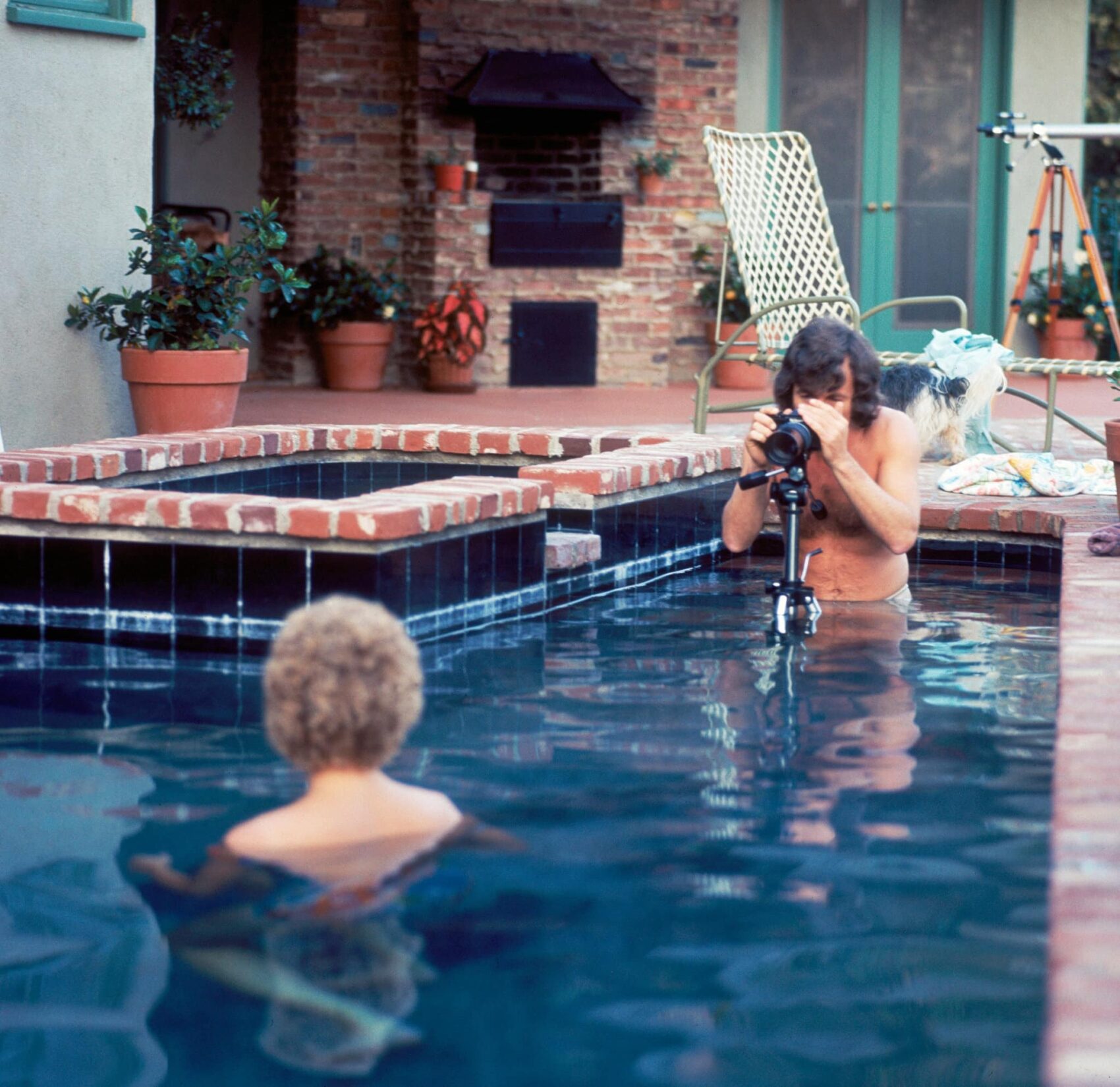
Terry O’Neill, who as a novice photographer found himself shooting pictures of an up-and-coming group called the Beatles and never looked back, spending a lifetime capturing memorable images of musicians, movie stars and other celebrity gods of the age, died on Saturday at his home in London. He was 81.
Carrie Kania, creative director of Iconic Images, the London agency that represents him, said the cause was cancer.
Mr. O’Neill was the photographer of choice for a wide array of the stars of the 1960s and beyond. He photographed not only the Beatles and the Rolling Stones, but also Frank Sinatra; not only classic Hollywood actresses like Audrey Hepburn, but also more recent big-screen favorites like Nicole Kidman. Winston Churchill, Nelson Mandela and other prominent politicians turned up in his lens as well.
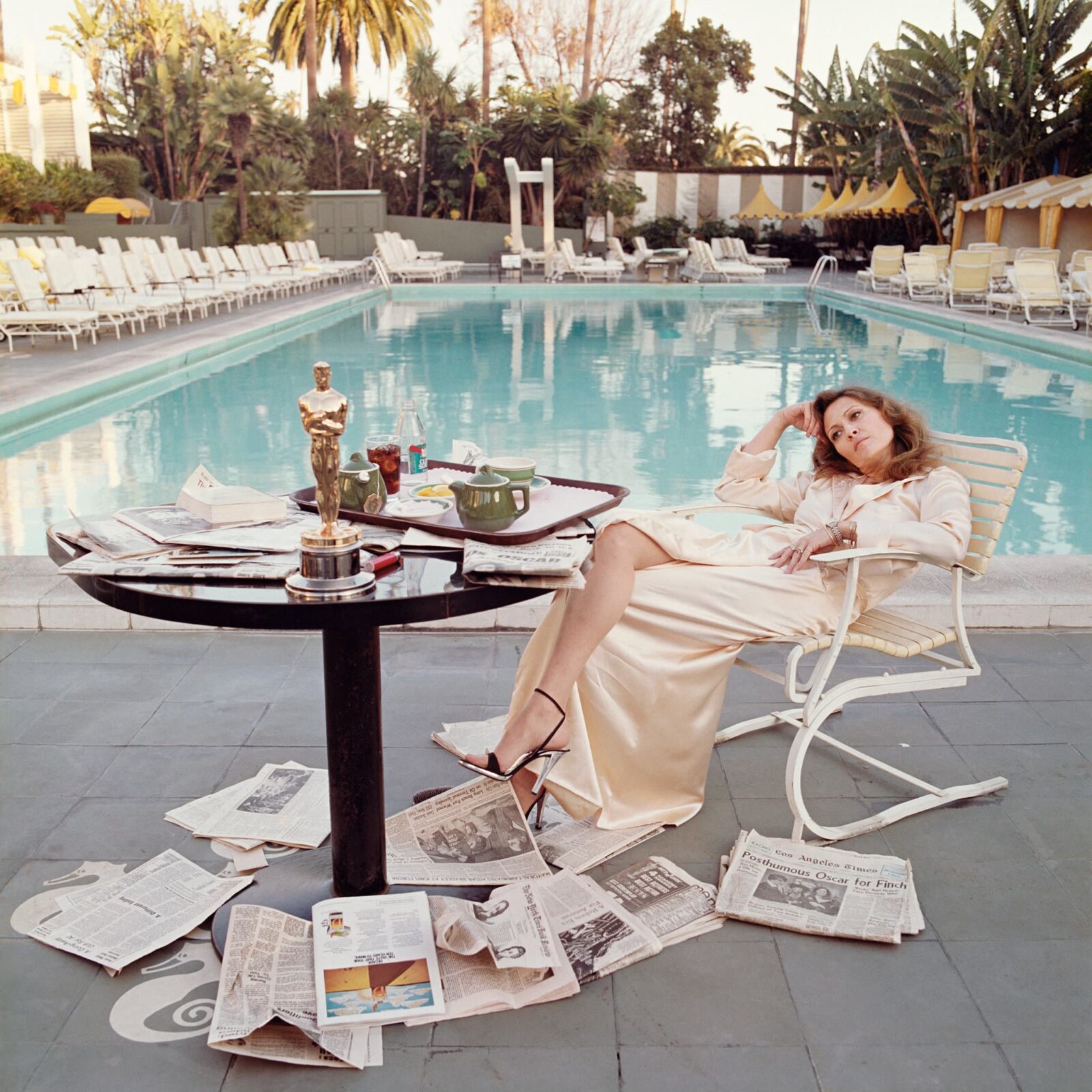
Mr. O’Neill had a way with putting famous people at ease and became friends with many of those he photographed. For a time in the 1980s he was married to Faye Dunaway, having taken one of his best-known images of her in 1977 on the morning after she won an Oscar for her performance in “Network.”
That picture — Ms. Dunaway lounging beside the pool at the Beverly Hills Hotel — and the story behind it show Mr. O’Neill’s preference for the casual shot over the stiff portrait, a signature of his work. People magazine had assigned him to get a photograph of Ms. Dunaway, assuming she would win the Oscar.
“While we were doing the pictures, I said to her: ‘I’ve been to the Oscars before. If you win, they always take the same pictures of you receiving the statue in the press room,’” Mr. O’Neill told New York magazine’s website The Cut in 2015. “I knew that wasn’t the real story — the real story is the next day, when they realize suddenly they’re getting all these offers to do films, their value goes from $100,000 to $10 million, and they’re just sort of stunned. I wanted to capture that.”
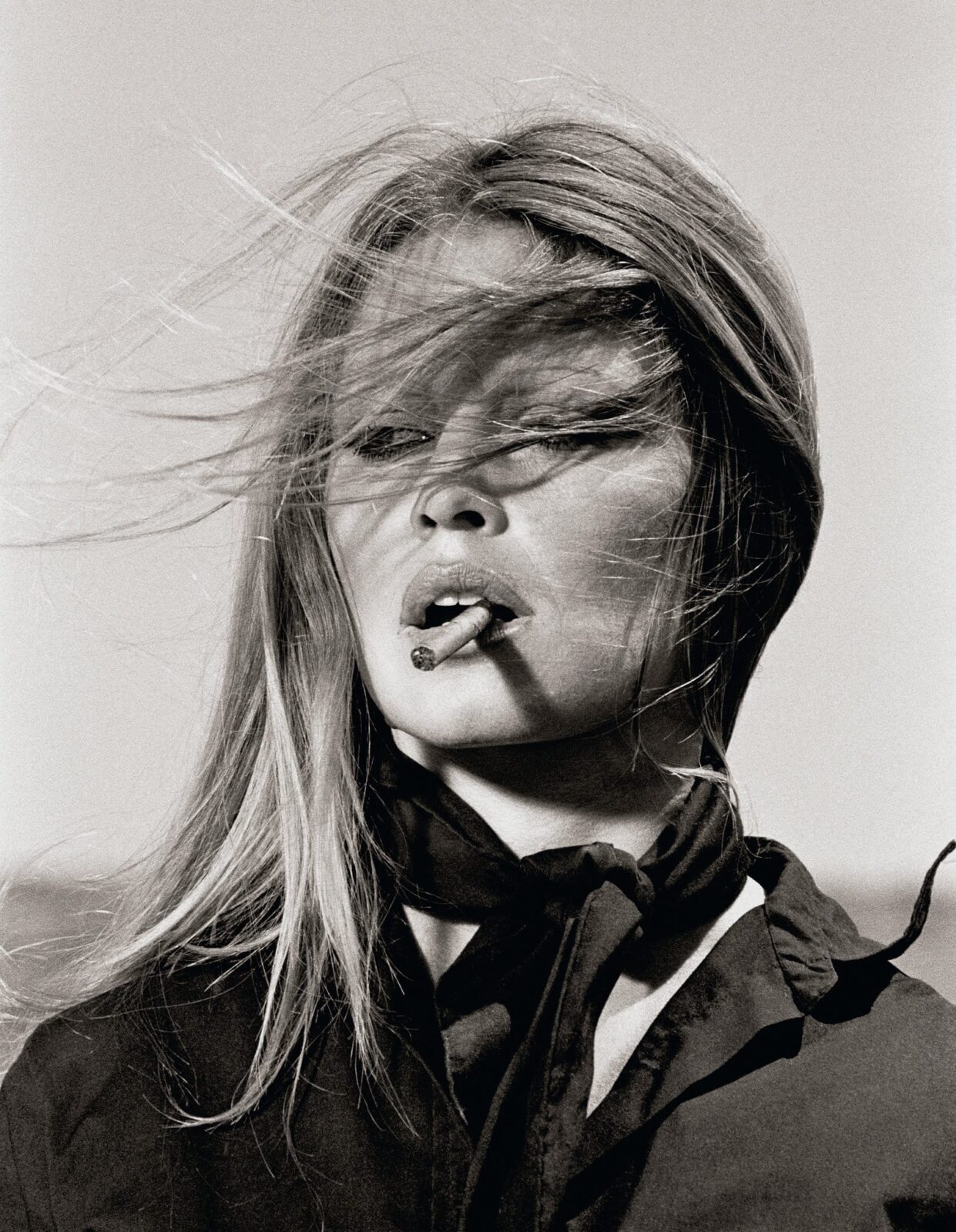
Another well-known O’Neill image was of Brigitte Bardot, captured in 1971 during an unguarded moment while she was on location in Spain, cigarette in her mouth, windblown strands of hair across her face.
“That was the last frame in a roll of 35 millimeter,” he told The Irish Examiner in 2013. “The wind blew and I took the picture.”
“I only had one crack at it,” he added, “and it turned out to be a stunner.”
Among Mr. O’Neill’s favorite subjects was Elton John; the image on the cover of his “Greatest Hits” (1974), of Mr. John in a white suit and oversize glasses, is his. Sinatra and David Bowie, two decidedly different singers, were also photographed repeatedly by Mr. O’Neill.
“I didn’t like his voice,” Mr. O’Neill confessed of Bowie in an interview last year with The Scotsman, “because I’m a jazz fan, a blues fan, and not really into that type of music. But he was a fascinating guy to work with.”
Present-day stars and celebrities, he found, were not so fascinating, lacking the magnetism and larger-than-life quality of the subjects of his photographic heyday.
“I don’t want to photograph anyone anymore,” he told The Scotsman.
“I think,” he added, “I was born at a time where I had the best of the best to shoot.”
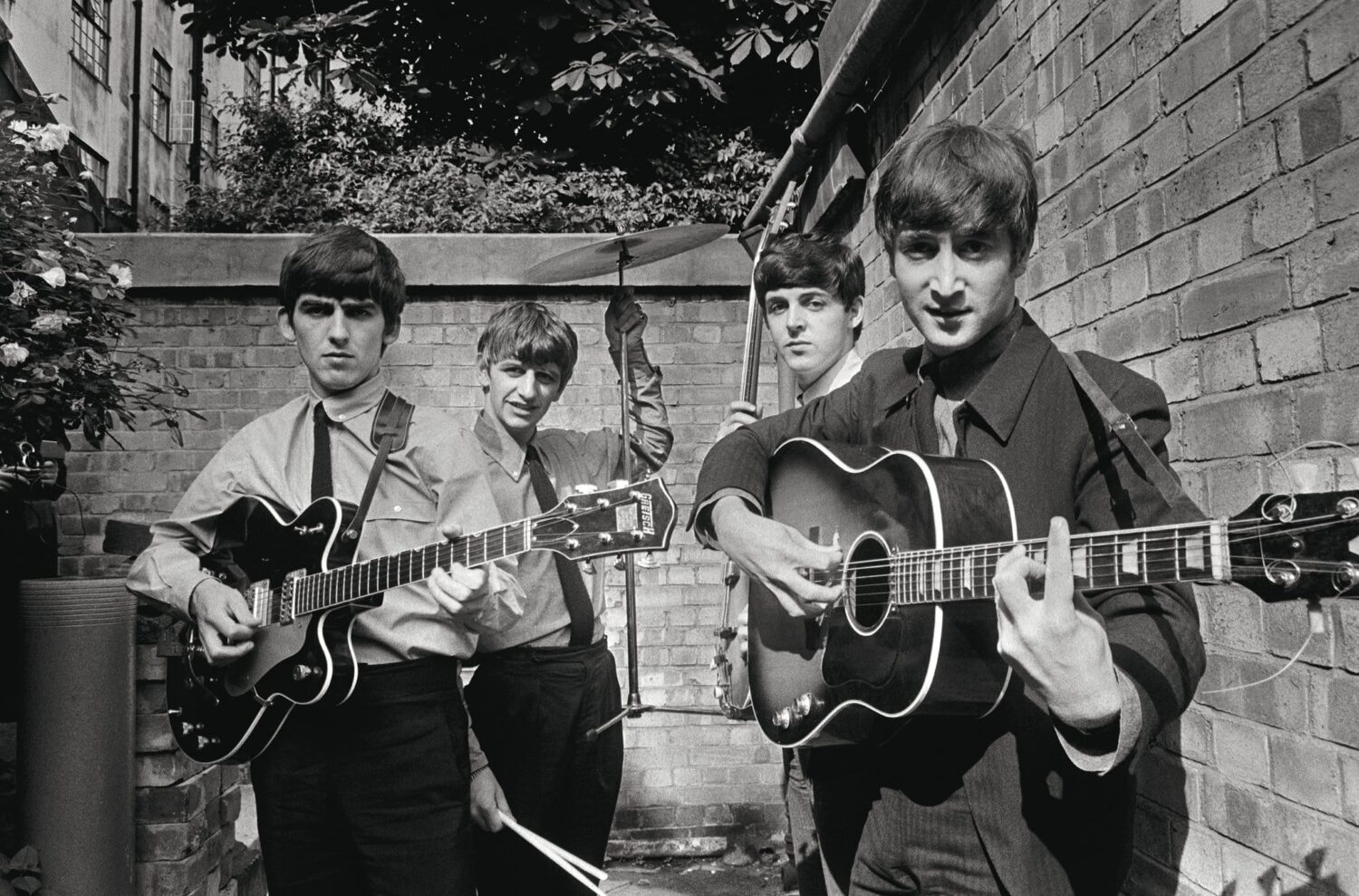
Terence Patrick O’Neill was born on July 30, 1938, in London. His father, Leonard, was a foreman at a Ford plant, and his mother, Josephine, was a homemaker.
He left school at 14, and several years later, aiming to become a jazz drummer, he sought a job as a flight attendant with British Overseas Airways Corporation, the forerunner of British Airways. He hoped to try jazz clubs in New York during layovers. Instead, the airline placed him in a photography unit based at Heathrow Airport.
As he told the story later, one photograph started him on his career path. Part of his job was to take pictures of people arriving and departing. He shot one of a well-dressed napping man in a bowler hat surrounded by African chieftains in traditional regalia. The man in the hat was the politician R.A. Butler, who was home secretary at the time, and the picture found its way to the newspapers, and editors on Fleet Street took notice.
“They said, ‘You’ve got an eye’, but I had no idea,” he told The Scotsman. “I said, ‘I don’t know what I’m doing,’ but they said, ‘Just keep doing it, we’ll train you,’ and they did. They turned me into a photographer.”

He worked for The Daily Sketch, a tabloid newspaper, for a time, then struck out on his own. An early assignment was to photograph the Beatles in 1963 just as they were breaking big in England. The Stones soon called asking for his services.
He continued to photograph both groups and their individual members as they rocketed to fame. He was still photographing Paul McCartney some four decades later. Elvis Presley, Janis Joplin, Tom Jones, Boy George, Led Zeppelin, Joan Baez and countless other musicians also turn up in his archive.
Mr. O’Neill married the actress Vera Day in 1963; they divorced in 1981. He and Ms. Dunaway were married from 1982 to 1987. In 2001 he married Laraine Ashton, founder of a modeling agency, with whom he had had a long relationship. She survives him, as do two children from his first marriage, Sarah and Keegan; a son from his second marriage, Liam; a stepson, Claude; and three grandchildren.
In 2018 Mr. O’Neill talked to The Scotsman about his collection of millions of negatives.
“I look back at all the pictures and I can’t believe the life I’ve had,” he said. “They’re all memories for me.”
David Gamble: Andy Warhol's House
admin
OCTOBER 14, 2019 | DAVID GAMBLE
In 1988 Sotheby’s New York hosted one of the most talked-about auctions of the decade, the sale of the Estate of Andy Warhol. In addition to paintings and sculpture, some of the most hotly sought-after items were Warhol’s personal effects. The goal of the sale was to raise funds for the then fledgling Andy Warhol Foundation for the Visual Arts.
Soon after Warhol’s death in 1987, photographer David Gamble was given exclusive access to Warhol’s East 66th street House, Factory and Warehouse. There, he captured the placement of Warhol’s belongings as the artist had lived with them over the years. Rather than simply documenting the space, and Warhol’s objects. Gamble’s images sought to capture the humanity and fierce individuality of the artist.
Please join us for an intimate look into the life of this beloved Pop icon as the Art Institute of Chicago launches its major retrospective ANDY WARHOL — FROM A TO B AND BACK AGAIN that “illuminates the breadth, depth and interconnectedness of Warhol’s production across the entirety of his career but also ways he anticipated the issues, effects, and pace of our current digital age.”
Legendary photojournalist Julian Wasser reflects on career, discusses Chicago exhibit
admin
CHICAGO (WLS) — Julian Wasser has witnessed Hollywood through a camera lens for well over half a century, capturing images of stars from Jack Nicholson to The Beatles, and he even got one of the very last pictures of Robert Kennedy before his assassination.
The view can be seen in a special exhibit, “Julian Wasser: The Way We Were,” a photographic time capsule of the 1960’s and 1970’s.
ABC7 Chicago’s Janet Davies talked to him about his new exhibit that opened Friday in River North.
Wasser began shooting spot news in the nation’s capital at a tender age.
Julian Wasser: “Every night I would climb out my bedroom window and steal my father’s car when I was 12 and take pictures, and they’d be on the front page of the Washington Post. My father would say ‘look, there’s another Julian Wasser in Washington.’ I said ‘yeah dad.'”
Later Wasser’s camera took him to New York then Los Angeles, shooting stars for publications like Time Magazine, Vanity Fair and Life Magazine.
Wasser: “Most photographers would get a star, line them up against a wall and stand there and don’t say anything. They would wait for the star to do something, I can’t stand that. They want direction. I gave lots of directions. They liked that and worked well with that. That’s why pictures look the way they do.”
Wasser’s career has spanned over six decades, and each of his iconic photographs has a story.
Wasser: “The Beatles, which was taken in London in Soho. Jayne Mansfield was at the Whiskey, I was shooting for Life Magazine. David Bowie, I was working for him, shooting at the Hollywood Bowl at one of his concerts.”
Janet Davies: “How about that Hugh Hefner photo on roller skates?”
Wasser: “He had incredible luck with women, didn’t he? He was actually a very, very nice guy, very sweet guy, he treated those girls like queens.
Davies: “What about the Marilyn one?”
Wasser: “I wanted to look at her, so I sat at her feet like a lap dog and took the pictures; she didn’t even know I was there, she’s a star!”
Wasser’s iconic photos are on display at the Hilton-Asmus Contemporary Gallery through September 30th.
“Julian Wasser: The Way We Were” runs through September 30th at the Hilton-Asmus Contemporary Gallery.
Wasser will be at the exhibit Friday from 6:45 p.m.- 9 p.m.
Hilton-Asmus Contemporary
716 N. Wells St., #3739, Chicago, IL 60654
www.hiltoncontemporary.com

